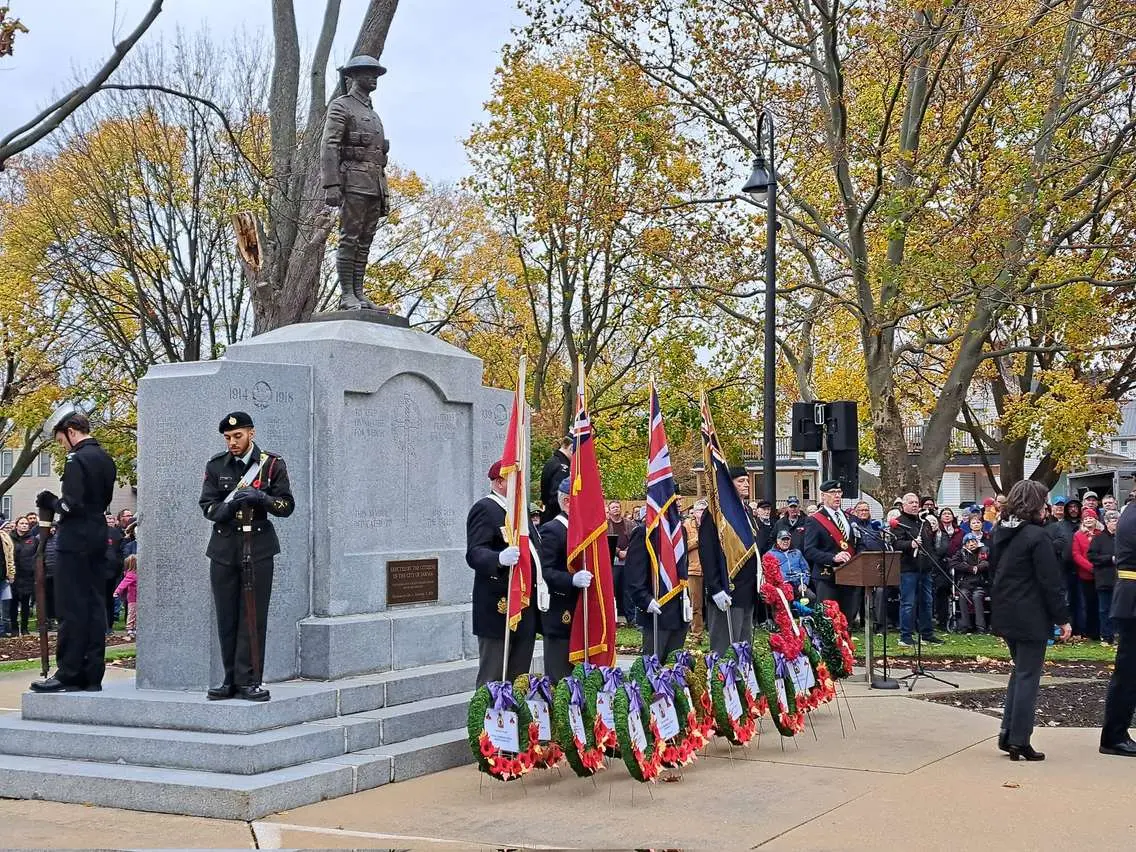By Phil Egan
In 1808, Jean Baptiste Pare became one of the first non-indigenous settlers to arrive in what is, today, Sarnia. He arrived with his family from Clinton River, today’s Mount Clemens. Many settlers would come upriver from Michigan following the British surrender of Detroit in 1796.
The local indigenous people, known as The Neutrals, were friendly, and Pare squatted on their land, paying them with the crops and fruit that he cultivated. The land that we know today as Veterans Park was part of the Pare property. Two other French families soon arrived, and they called their tiny settlement Les Chutes, or, The Rapids.
Most of the Reserve lands were purchased by the Crown in 1827. In 1853, the community, now known as Port Sarnia, bought the future park from the government with the intent of using it as a marketplace and school grounds, although the land was used for neither purpose.
Named Market Square at the time of the purchase, the land became a drilling ground for area militias and acted as a site for public addresses to the growing community. In 1872, Market Square was the site of the historic public debate between Sir John A. Macdonald and Sarnia’s Alexander Mackenzie, who became Canada’s second prime minister in 1873.
By the time of Queen Victoria’s Golden Jubilee in 1887, this was the only planned green space in Sarnia. First Nations people coming to PortSarnia to purchase stores had rested here before beginning their homeward journey. Thus Market Square, often now called Wellington Square, became much more than the site where every major public event took place. Men working six days a week would bring their families to the park for picnics, or simply to rest or recuperate. In 1891, as a tribute to the Queen, the community, by now the Town of Sarnia, formally renamed Market Square as Victoria Park.
The park was selected as a location for items of historical interest. An old cannon, known as Big Tom and linked to the Crimean War (1853-1856), which had been purchased from the Military Reserve at Point Edward in 1879, was located in the park. Two bandstands once stood here, and public concerts began in 1898.The Boer War Memorial Fountain was erected in Victoria Park in 1908, paid for by school children and citizens of Lambton County.
In 1903, thanks to a $15,000 grant from the Carnegie Foundation, Sarnia’s first free public library opened here. The original Carnegie Library was replaced in 1960.On May 7, 1914, in a ceremony in Victoria Park, the Duke of Connaught and his daughter, Princess Patricia, declared the Town of Sarnia to have achieved city status. Mayor Joseph Dagan chose the occasion to christen Sarnia the “Imperial City.”
The Sarnia Cenotaph (the word means empty tomb) was unveiled in the park in 1921. Its purpose is to honour Sarnia’s fallen soldiers of the two world wars, the Korean conflict and the mission in Afghanistan. The figure of the Great War soldierwas added to its top in 1922.
In October of 1998, Victoria Park was renamed Veterans Park. In 2016,in keeping with this new theme, a Light Armoured Vehicle (LAV III) was unveiled and dedicated to Canadian soldiers of the Afghan mission, especially to two local fallen soldiers.
In 2021, the Sarnia Historical Society, the Sarnia Lambton Construction and Building Trades Council and the Royal Canadian Legion Branch 62 undertook a $100,000 renovation in the park. With the addition of new lighting, statue repairs and security cameras, the Veterans Park Cenotaph was rededicated on its 100th anniversary.


